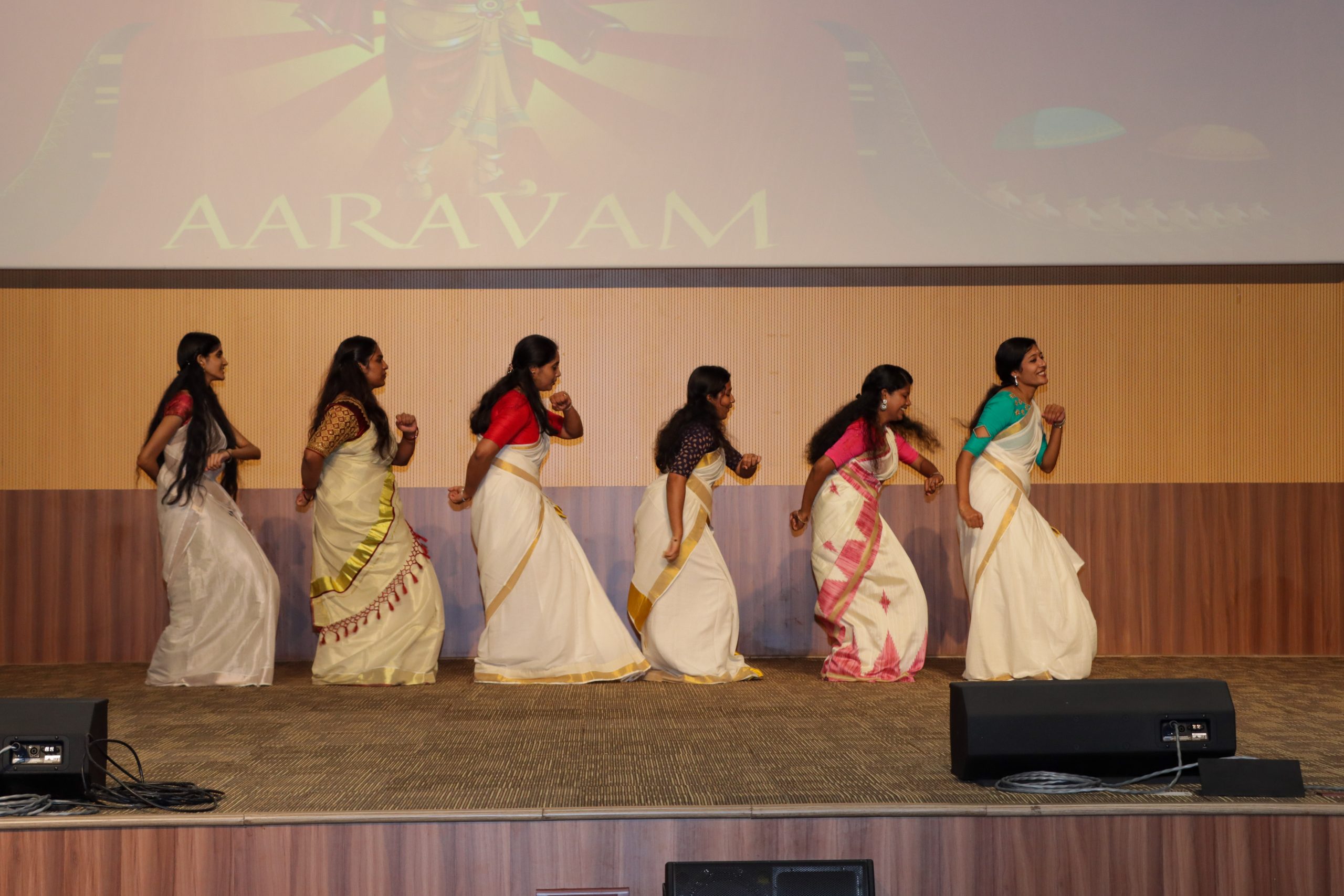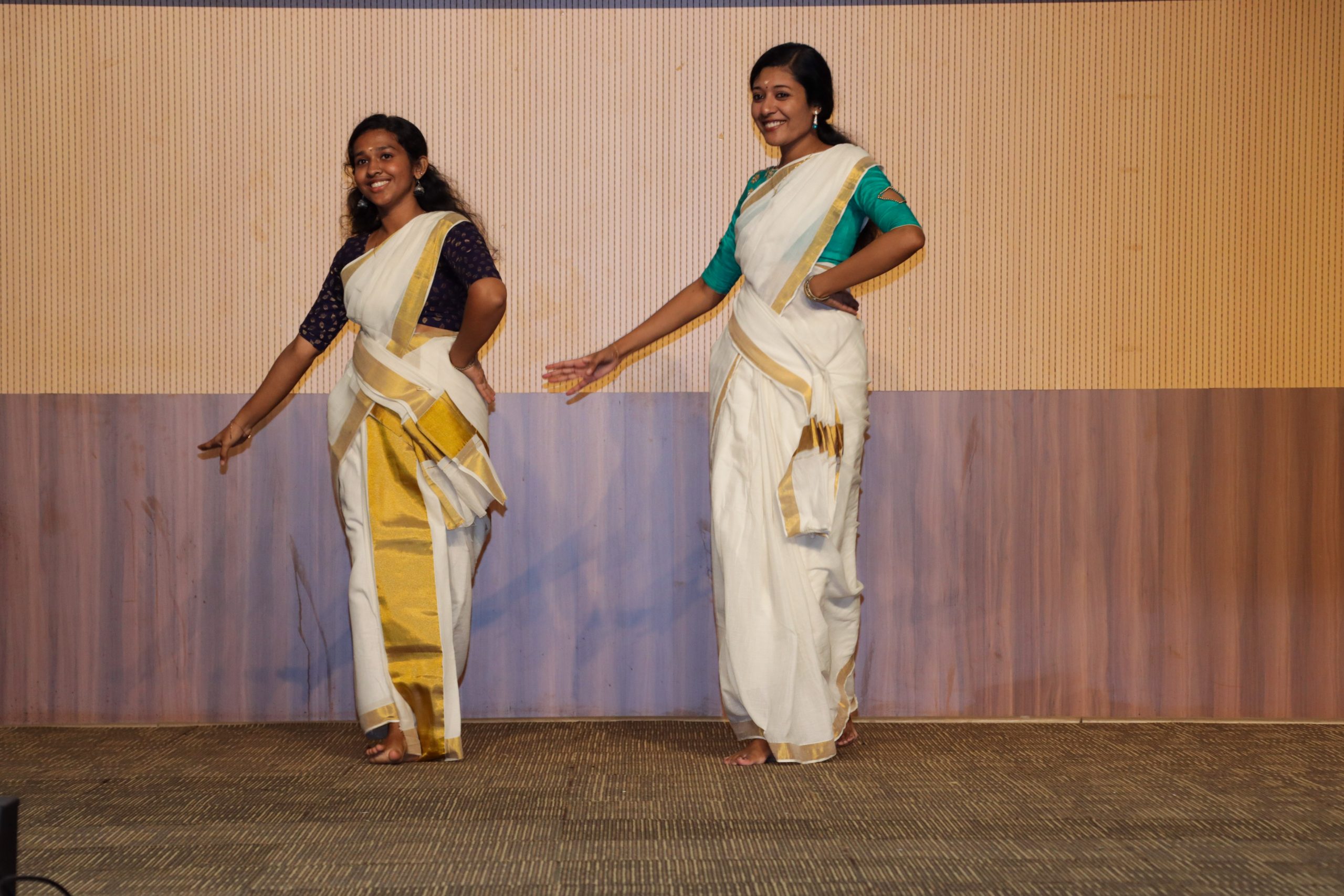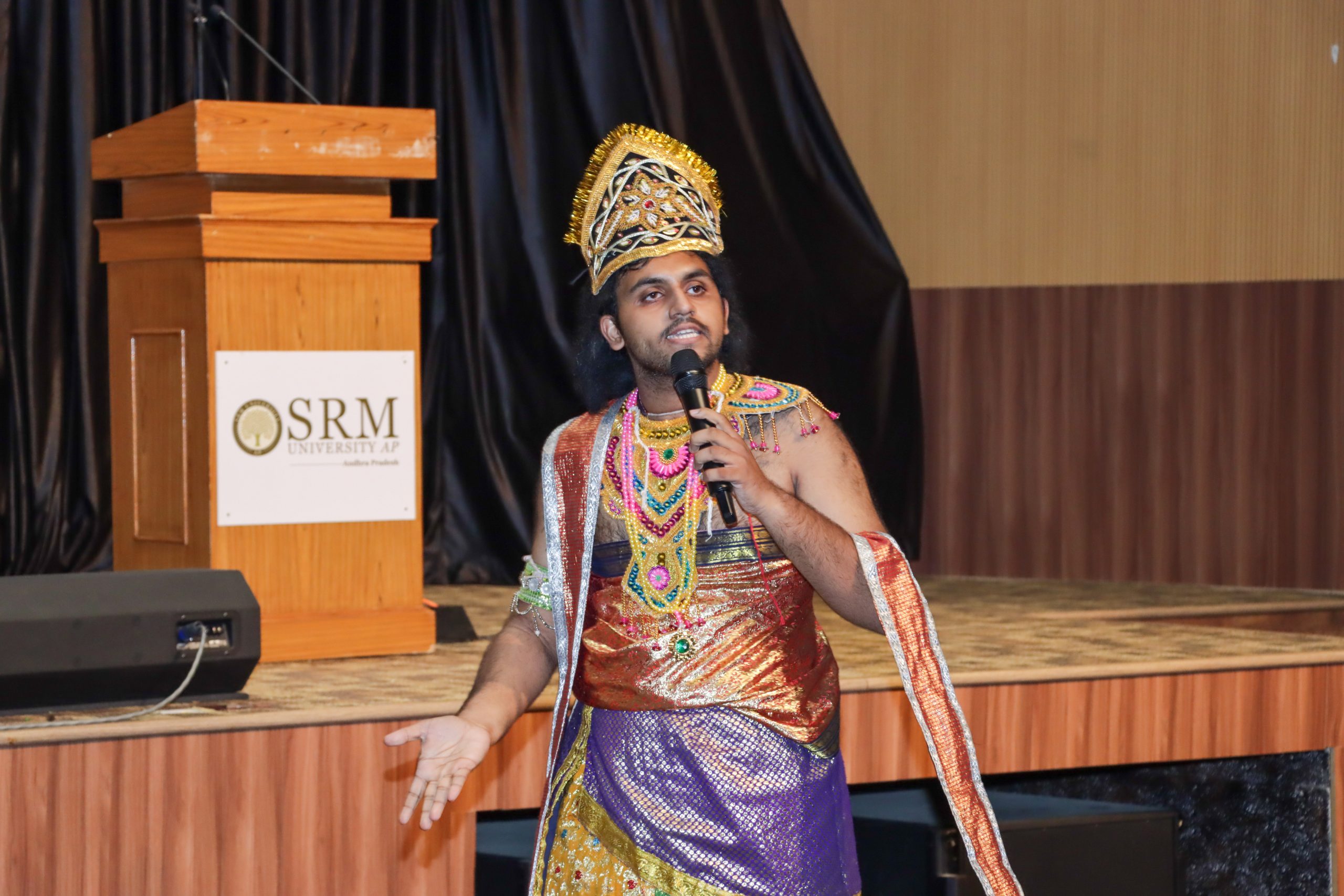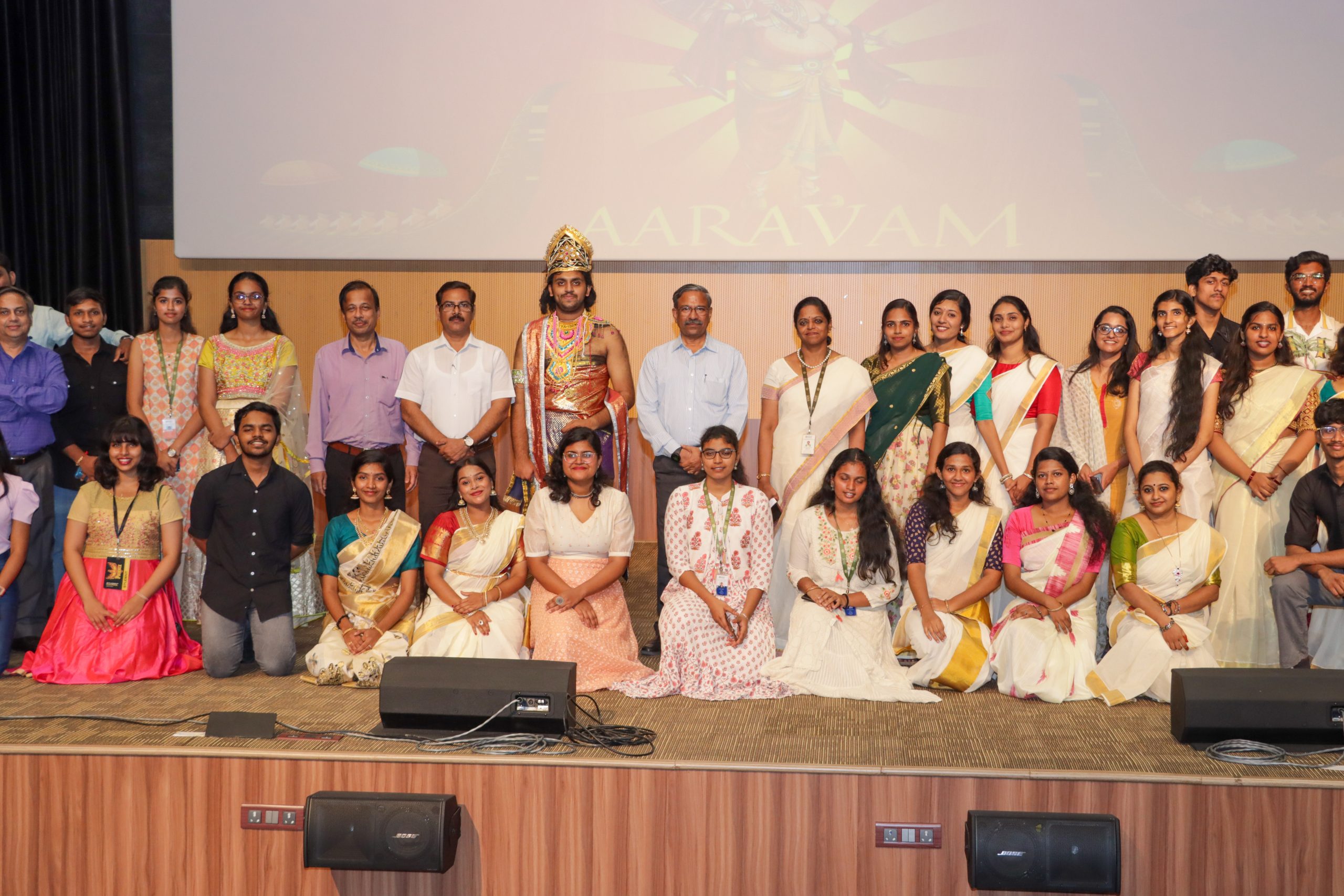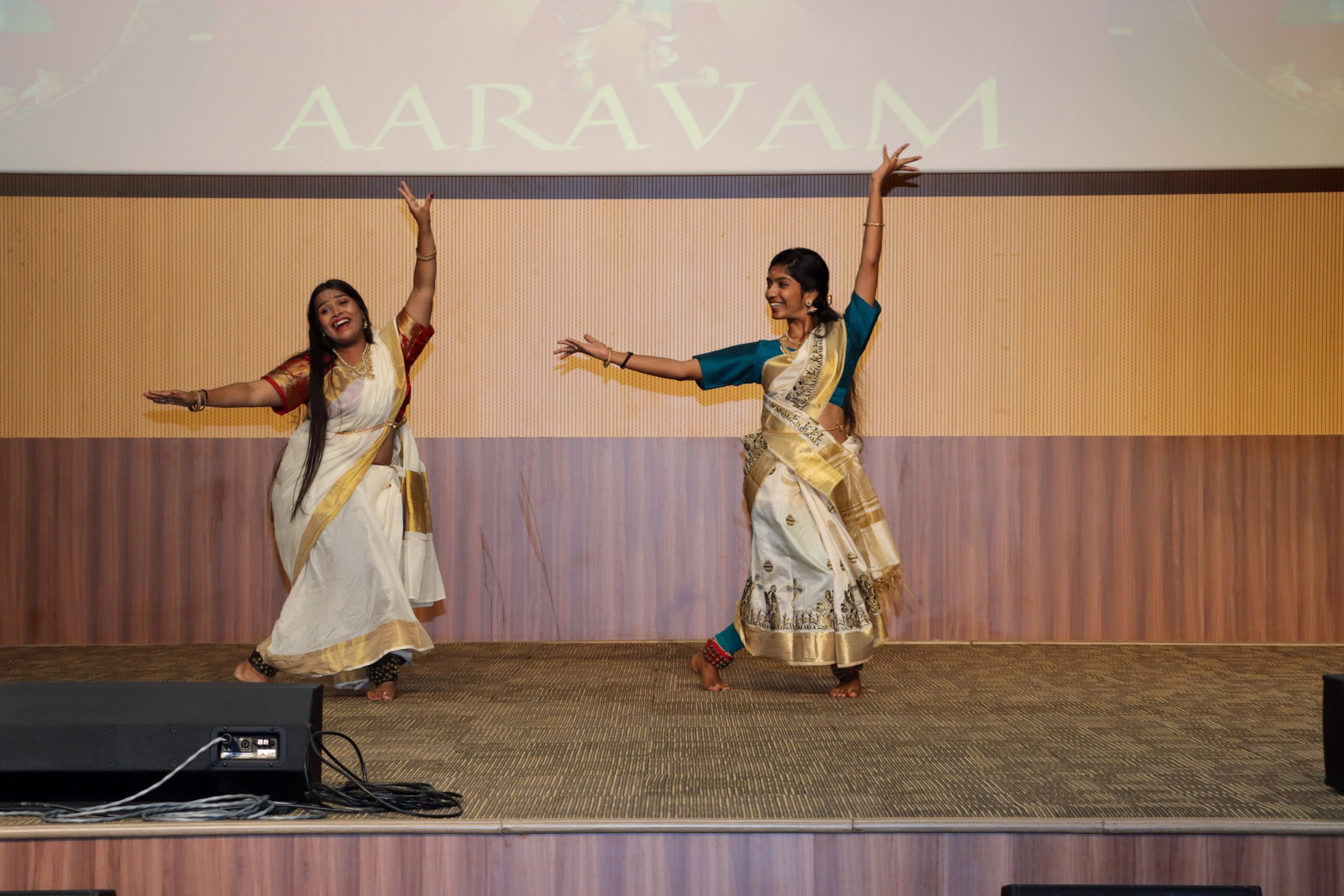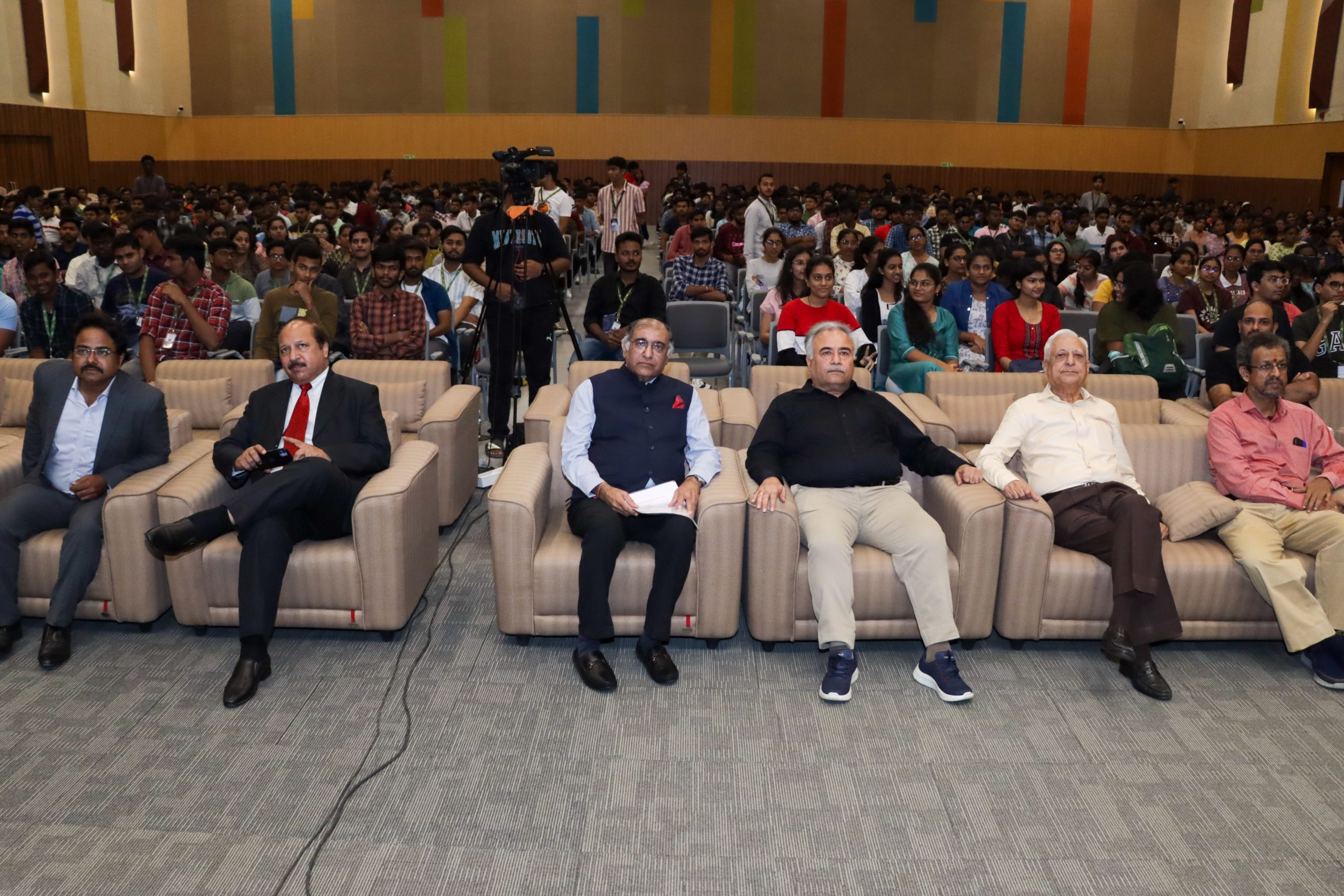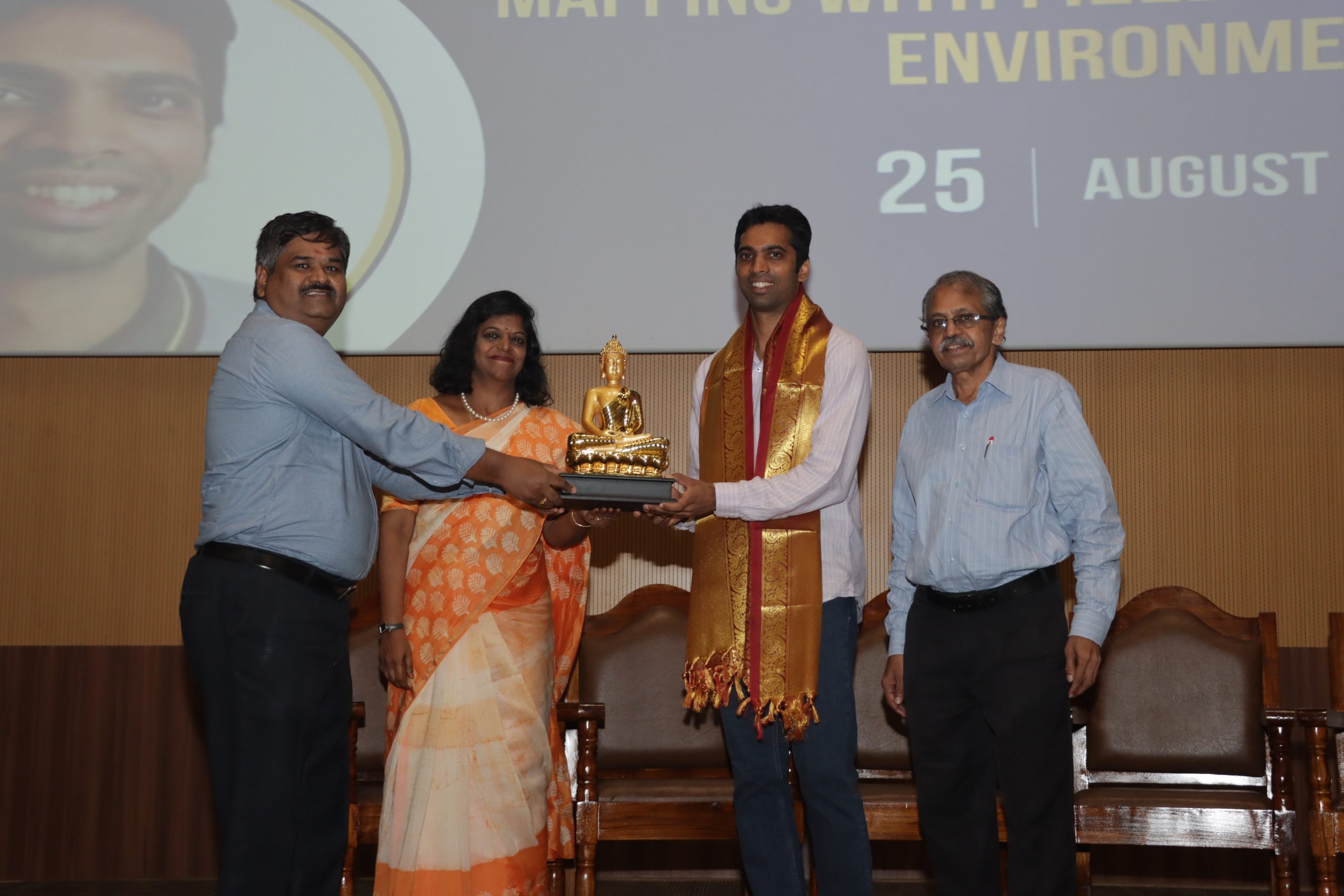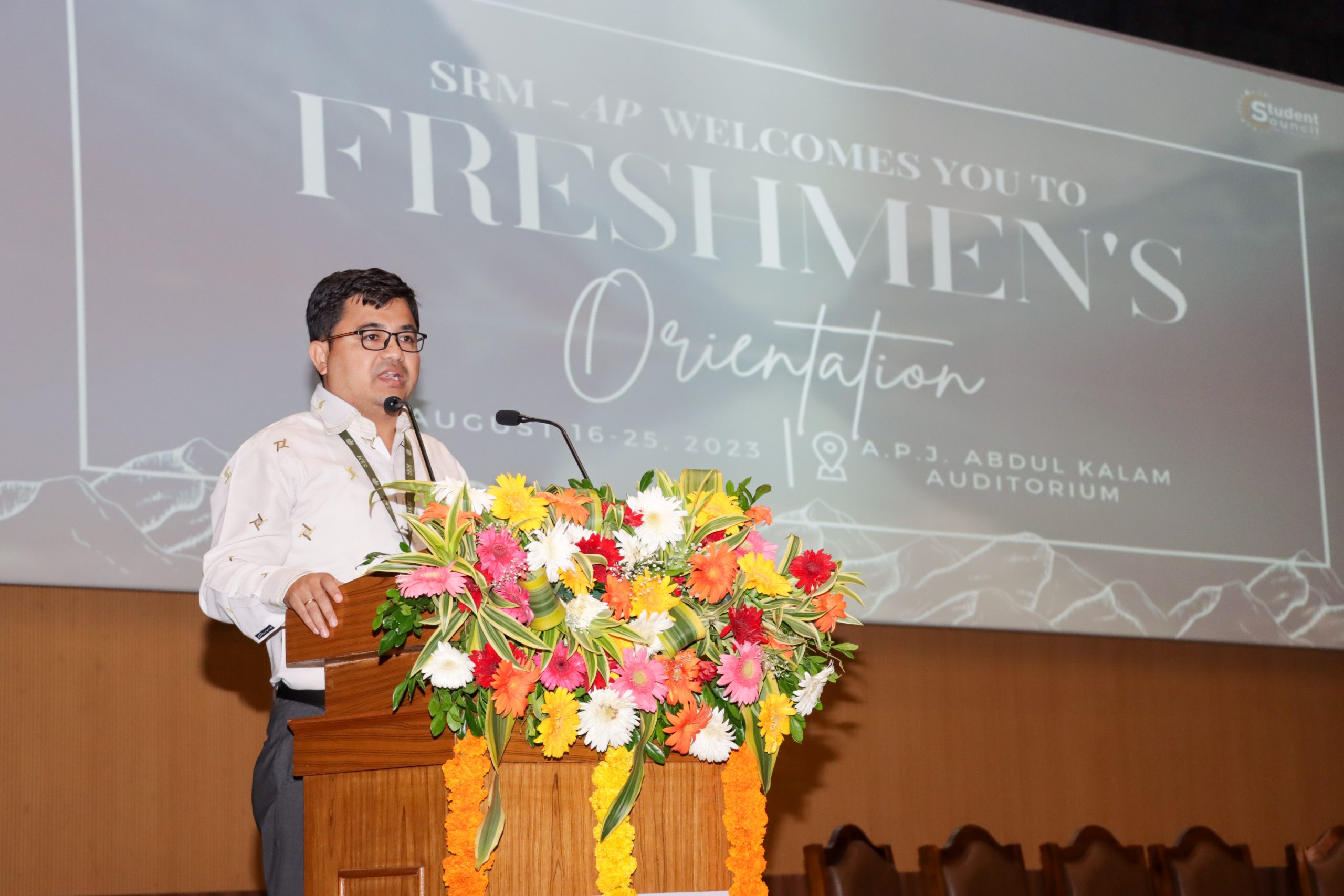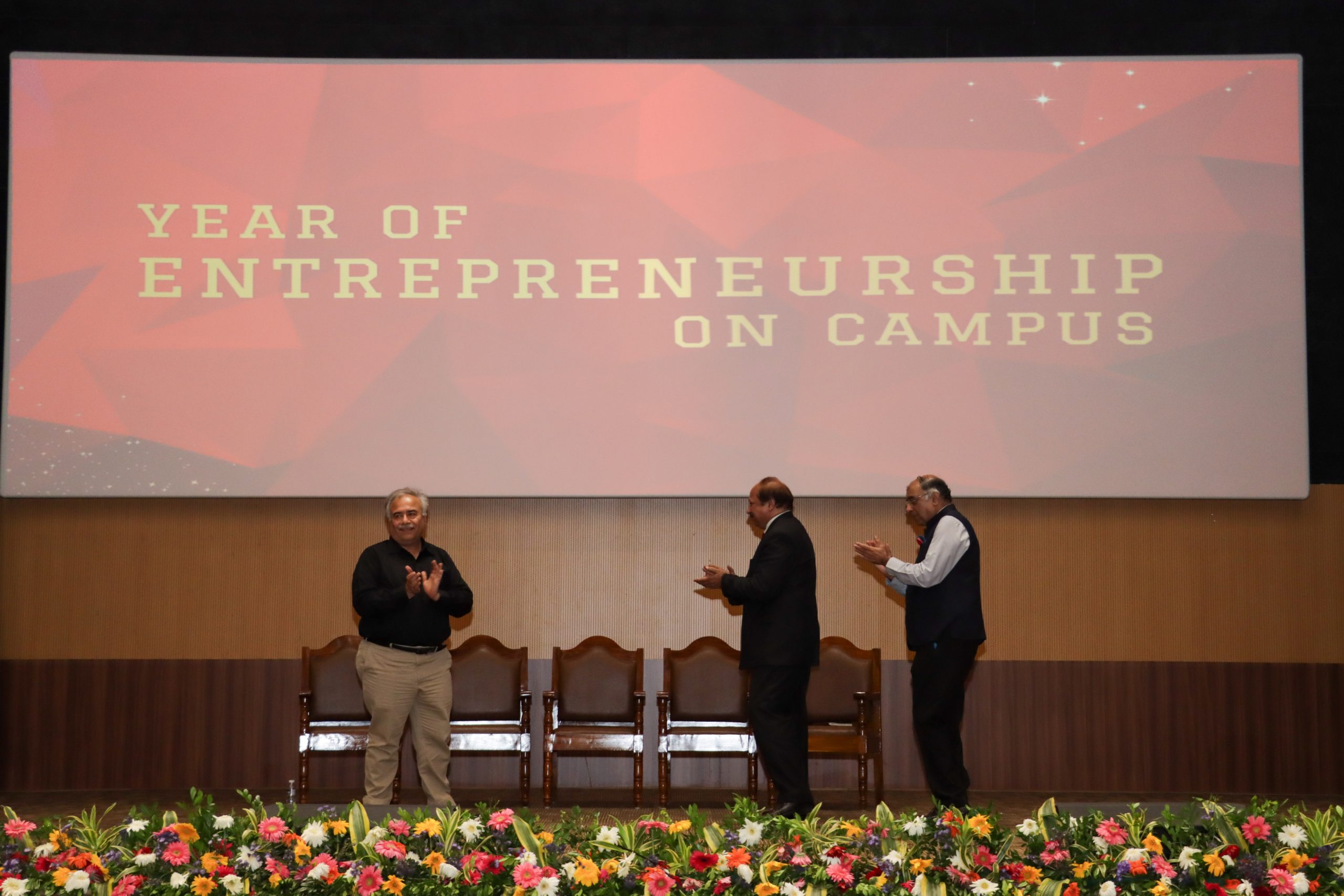AARAVAM at SRM University-AP Celebrates King Mahabali’s Homecoming
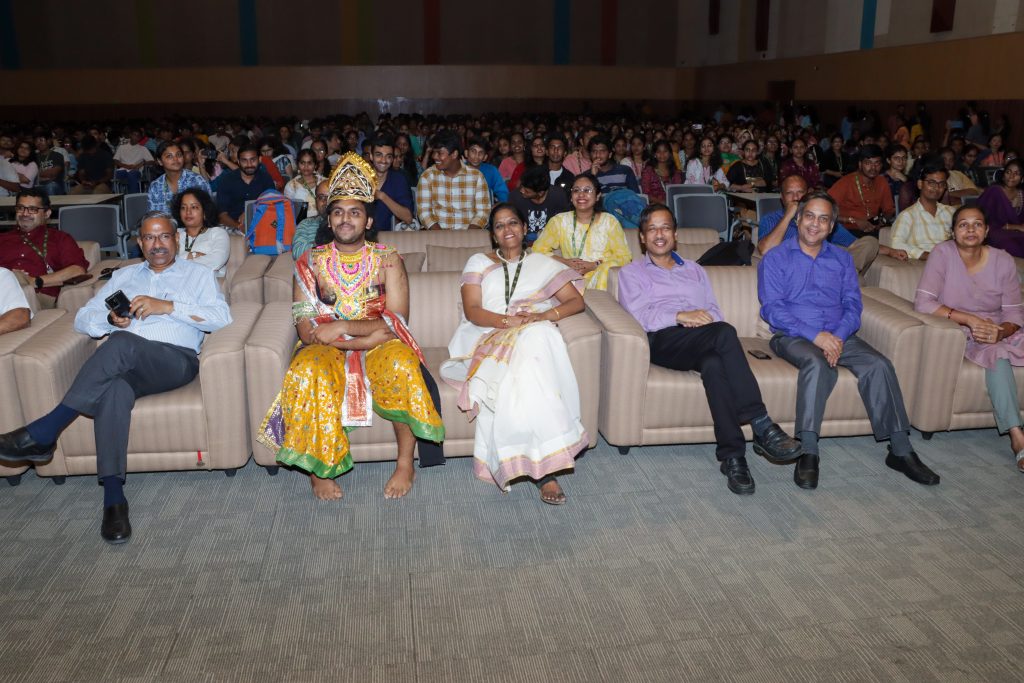 SRM University-AP is a home to diverse group of students coming from different parts of the country and the world, who speak different languages, follow different religions and have different beliefs; the university is a melting pot of cultures and together the varsity weaves a wonderful tapestry. As part of this wonderful diversity, SRM University-AP makes it a point to celebrate festivals and honour the culture of every community and state. The Onam Celebration, Aaravam on campus saw the students join hands to put forth a beautiful spectacle in the form of traditional dances like Thiruvathira Kali and Bharatanatyam and a wonderful amalgamation of Indo-western dance and music performance.
SRM University-AP is a home to diverse group of students coming from different parts of the country and the world, who speak different languages, follow different religions and have different beliefs; the university is a melting pot of cultures and together the varsity weaves a wonderful tapestry. As part of this wonderful diversity, SRM University-AP makes it a point to celebrate festivals and honour the culture of every community and state. The Onam Celebration, Aaravam on campus saw the students join hands to put forth a beautiful spectacle in the form of traditional dances like Thiruvathira Kali and Bharatanatyam and a wonderful amalgamation of Indo-western dance and music performance.
The celebration of Onam, a harvest festival of the southern state of Kerala is made in remembrance of King Mahabali’s reign which was believed to be equivalent to the Ramrajya. King Bali’s reign oversaw no discrimination or ill-treatment of his subjects, people lived in perfect harmony and prosperity. Onam is celebrated in remembrance of this golden era.
The vibrant festivities witnessed the participation of Registrar, Dr R Premkumar, Deans of all schools, Directors, Faculty, Staff, and students of SRM University-AP.
- Published in News
Teacher-Student Duo Author a Chapter on Graph Neural Networks
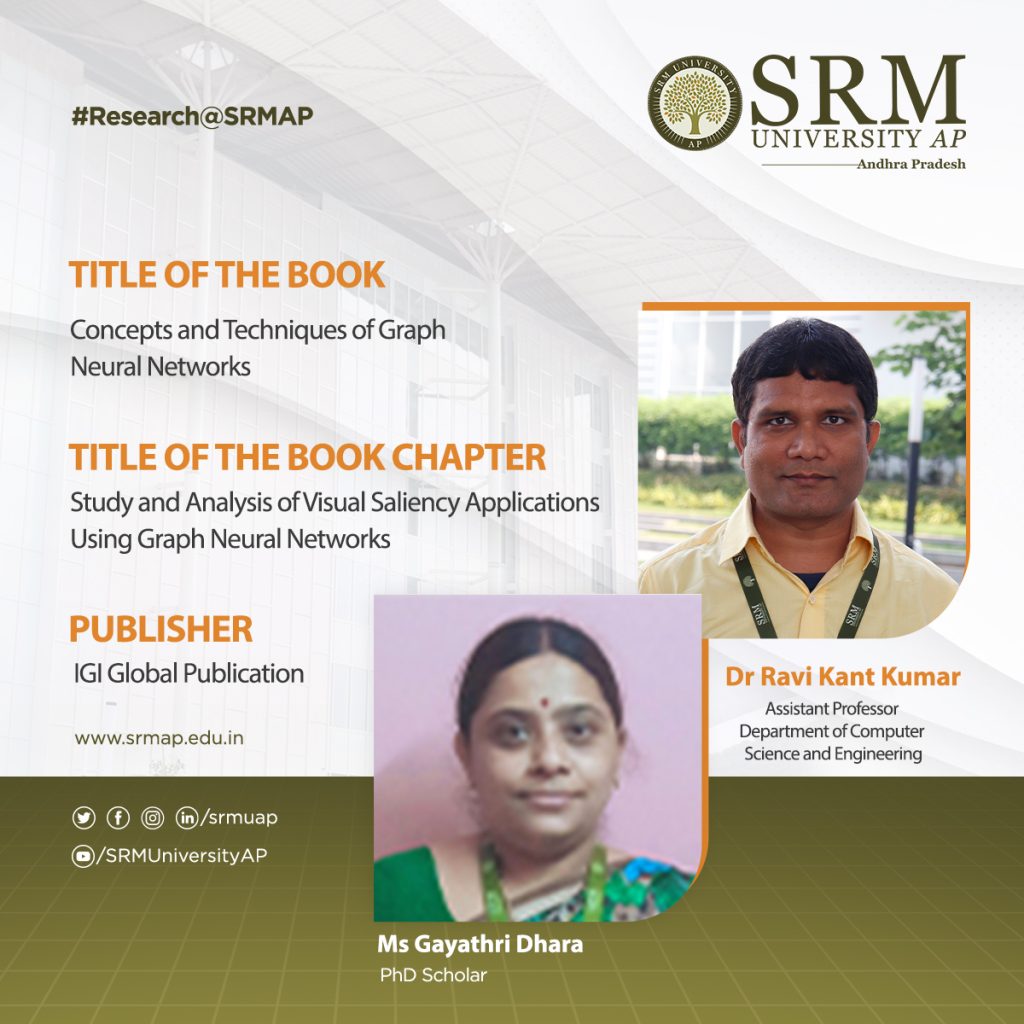
Dr Ravi Kant Kumar, Assistant Professor at the Department of Computer Science and Engineering at SRM University-AP and his research scholar, Ms Gayathri Dhara have recently made a significant contribution to the field of Graph Neural Networks. The teacher-student duo have offered relevant analysis of visual saliency applications using Graph Neural Networks (GNN) in their book chapter titled “Study and Analysis of Visual Saliency Applications Using Graph Neural Networks” in the book, Concepts and Techniques of Graph Neural Networks. The topic of their study will prove to be a key source of reference for industry professionals, researchers, scholars, academicians, practitioners, instructors, and students.
Description and Significance of the Chapter
The chapter covers the practical applications of GNN in the field of visual saliency. Various applications of computer vision problems implemented using graph neural networks (GNNs) have been studied and analysed in this chapter. It also includes the design approach of GNN, the various computational models used in GNN, its challenges and recommendations. The social significance of GNN in visual saliency extends to various domains like Human attention modelling, Advertising and marketing, Visual content understanding, and so on.
Significance of GNNs
Graph Neural Networks (GNNs) have gained significance in the field of visual saliency due to their ability to model complex relationships and dependencies within visual data. Visual saliency refers to the process of predicting the most visually prominent regions or areas in an image or video that attract human attention. It plays a crucial role in various computer vision applications, such as image understanding, object recognition, and scene understanding. GNNs can learn spatial dependencies and feature representations from visual data. There are many methodologies that address the detection of the salient object using GNN. GNNs can handle multi-modal data, combining visual information with other modalities such as textual or semantic features. This integration allows GNNs to leverage additional cues and contextual information to improve visual saliency prediction. So, studying these different salient object detection methods using GNN and knowing the challenges of GNN will help in meeting our research objectives.
- Published in CSE NEWS, Departmental News, News, Research News
Fostering Global Perspective in Education
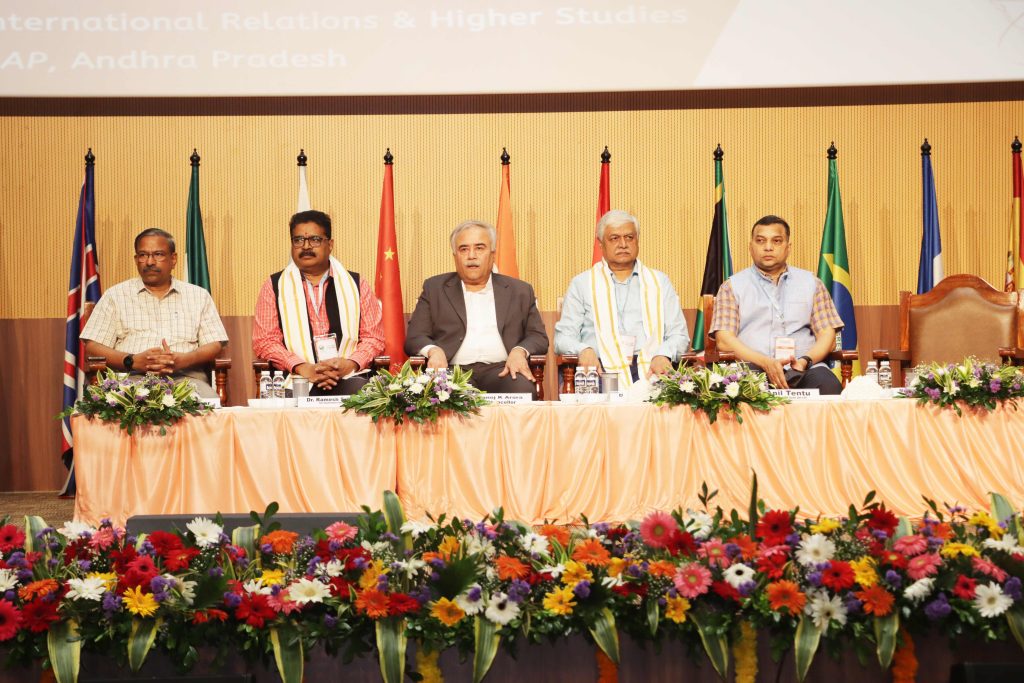
As part of its initiative to whittle the future of education, The Directorate of International Relations and Higher Studies under the aegis of SRM University-AP has organised a Global Principal Conclave that saw the participation of 50+ Educational Leaders from across 15+ countries. Throughout the conclave, the educational leaders were seen exchanging thought-provoking discussions, and innovative teaching approaches in order to foster a global perspective on teaching and learning.
Distinguished guests, including Dr Mukesh Tripathi, Director of AIIMS Mangalgiri, who served as the Chief Guest, and Dr Ramesh Srikonda, Director of Planning and Architecture, Vijayawada, along with Mr Anil Tentu, CEO of AP Innovation Society, Govt. of Andhra Pradesh, as Guests of Honour, joined delegates from around the world to discuss the importance of the event and praised the university’s initiative in hosting the conclave.
The Conclave also witnessed the historic moment where institutes of excellence like AIIMS, Mangalagiri and SRM University-AP signed an MoU. This new collaboration between the two institutions will prove to be a noteworthy milestone in advancing medical research, education and healthcare in the region. “Although we have been working together, this MoU will further enhance the inter-disciplinary collaboration among the institutions,” said Mr Mukesh Tripathi in his address. In his speech to the delegates, Prof. Manoj K Arora said, “Our objective is to be globally connected, nationally relevant and regionally transformative.”
The conclave also saw multiple panels that deliberated on issues such as holistic development, assessment systems and how they impact the education system, intercultural system of learning and harmony in the realm of education. The panellists who spoke on holistic approaches to measuring educational excellence collectively agreed on the scarcity of teachers who join the profession as a choice. The session also deliberated on the system of assessments in education where, Mr C A Govindrao Naik, CEO & Managing Director, JSS Private School, Dubai opined that “not everything important is measurable and also not everything that is measured is important.”
The Global Conclave ended with a cultural performance by students of SRM University-AP with closing remarks by Dr Swetha Pasupuleti, Director of International Relations and Higher Studies SRM University-AP.
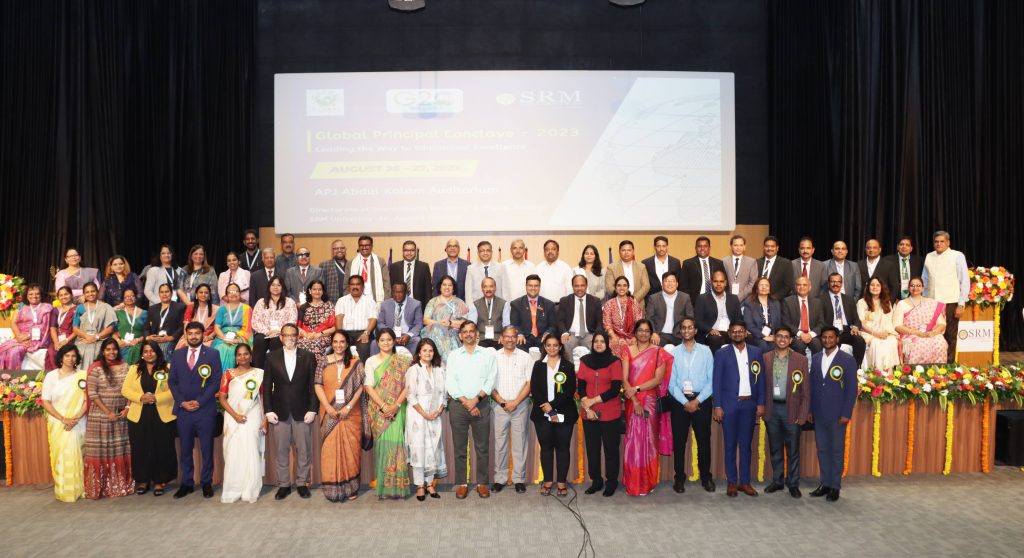
- Published in News, University Event
UDAAN 2023: Freshers’ Orientation Comes to a Close
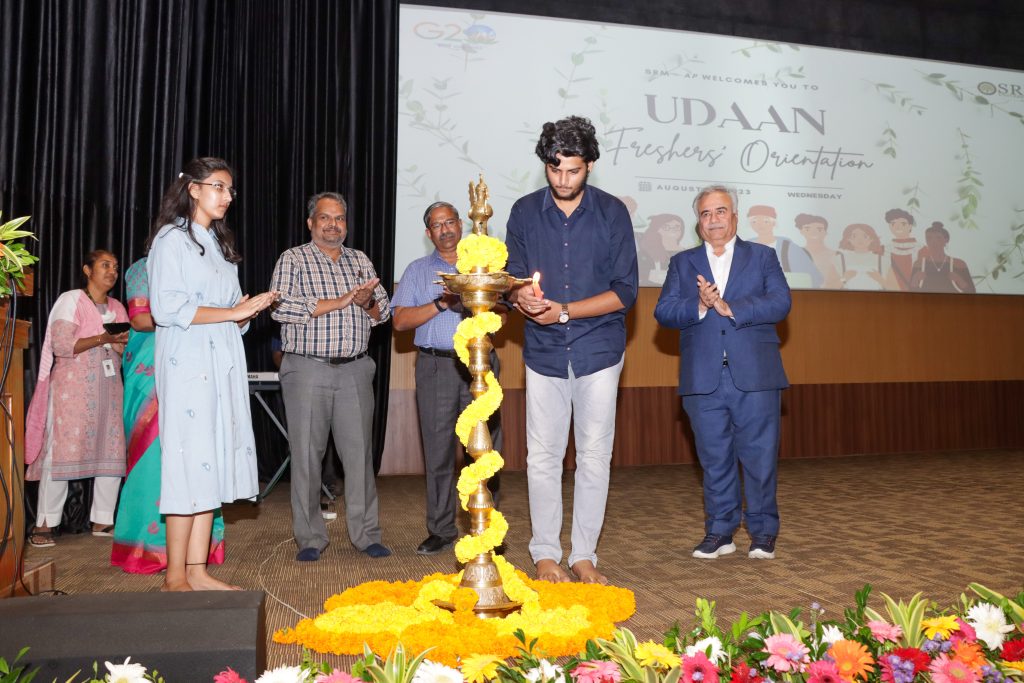
The exciting journey of UDAAN, the Fresher’s Orientation, spanning a vibrant 9 days from August 16 to 25, has come to a close.
Newly enrolled students from diverse parts of the country and the world attended the session. The initial sessions of the Freshers Orientation unfolded with students being inducted into university life. While the second phase of the orientation saw the participation of, industrial experts, entrepreneurs, professors, start-up coaches, and motivational speakers like Prof. Vinay Nangia, Former Professor & Head, Department of Management IIT Roorkee; Dr Dinesh Dua, Executive Director Nectar Life Sciences Limited; Mr Sanjiv Bhavnani, Founder CEO & Chief Mentor Mentorpreneur & Infotecniques Groups; Dr Deepak Pandit, Chair Professor – Innovation and Entrepreneurship I2E; Mr Vivek Atray, ex-IAS officer and, Mr Shiven Tandon, Chartered Accountant and Motivational Speaker; and Dr Nived Chebrolu, a Post-doctoral research scholar from Oxford Robotics Institute.
The distinguished guests helped the students acclimatise with their alma mater. The guests also cited personal experiences and anecdotes with the students making the session more engaging, and lively. The sessions were a two-way street, at the end of which students were allowed a Q and A session with the experts. As part of the orientation, students were also seen enrolling themselves in different clubs and competitions.
On August 25, 2023, Vice Chancellor Prof. Manoj K Arora concluded the 9-day orientation by presenting awards to the winners of the various club competitions. The recipients included: Makadiya Niksham and Nithya Vattikuti from the Acts Club, Praveen Kumar Kommanaboyina and Meghana Nangireddy from the Anime Club, Rungshit Basu and Venkadesh Prasad from the E- Sports Club, Vineesha and Pranadhaa from the Environment Club, Mahalakshmi and Navneeth from the Cinemates Club, Myla Gangadhar from the Quiz Club, Dainik Dubey and Zaara from the Theatre Club, Muppana Ananya Chowdary from the Photography Club, Datha Sai Nemallipuri and Ritwik Paramesh Medidi from the Cubing Club, Gunatit Jariwala and Dakshitha Susheela Popuri from the Yoga and Meditation Club, Y Vishnu and Hiti from the Dance Club and Jahnavi Jyotimari Aravelli from the Wellness Club.
UDAAN, the Freshers’ Orientation definitely offered a preview to the newcomers of what lies ahead of their glorious academic life.
- Published in News, University Event


